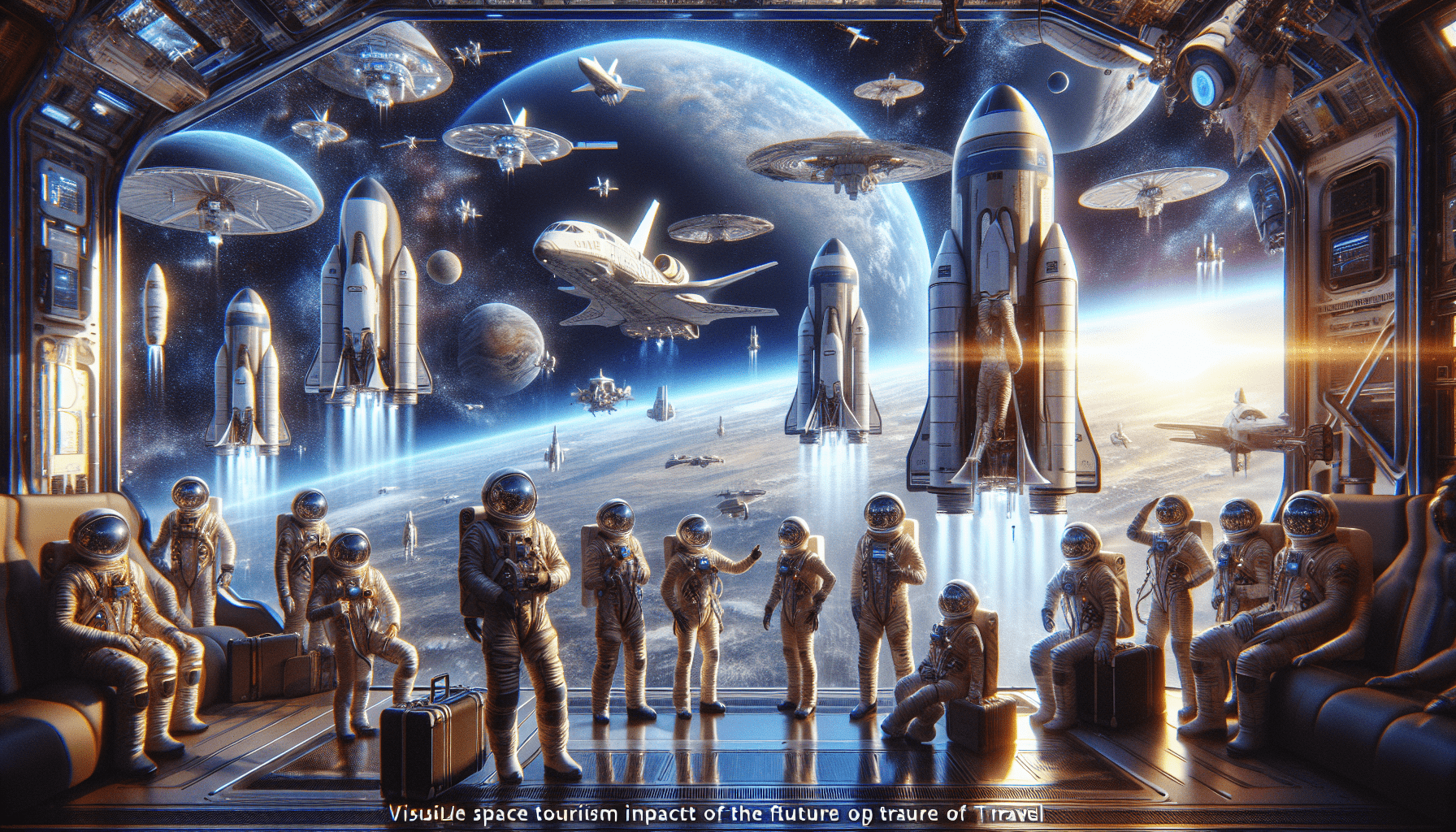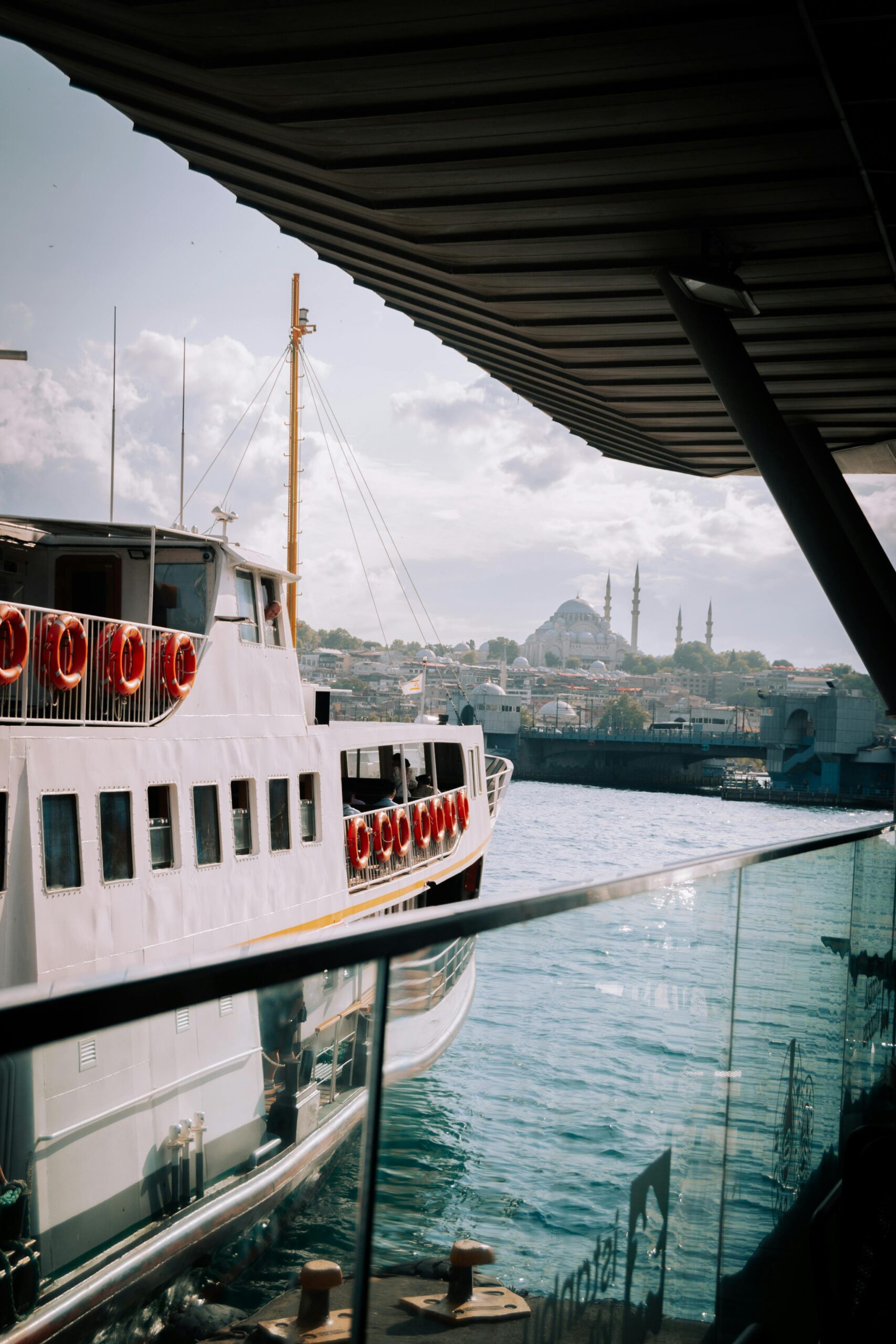adidas Unisex Defender 4 Large Duffel Bag, Black/White, One Size
$26.99 (as of November 23, 2024 15:27 GMT +00:00 - More infoProduct prices and availability are accurate as of the date/time indicated and are subject to change. Any price and availability information displayed on [relevant Amazon Site(s), as applicable] at the time of purchase will apply to the purchase of this product.)Imagine a world where you can venture beyond our earthly bounds and explore the vast wonders of space. A world where the idea of space travel is not limited to trained astronauts, but open to everyday individuals seeking an extraordinary experience. This is the world of space tourism, a concept that is rapidly gaining popularity and capturing the imagination of people worldwide. As technology advances and private space companies emerge, the possibility of visiting space is becoming a reality for those with a sense of adventure and a curiosity for the unknown. In this article, we will delve into the rise of space tourism, exploring its history, current developments, and the exciting prospects it holds for the future. Get ready to embark on an interstellar journey like no other.

History of Space Tourism
The concept of space tourism
Space tourism, the idea of ordinary people traveling to space for recreational purposes, has captured the imagination of individuals for many years. The concept originated from the belief that space exploration should not just be limited to astronauts and scientists, but should also be accessible to the public. The idea gained significant popularity in the late 20th century, fueling the dreams of countless individuals to experience the wonders of space firsthand.
Early pioneers in space tourism
While space tourism is still in its nascent stages, there have been several pioneers who have paved the way for this extraordinary industry. One such pioneer was Dennis Tito, an American businessman who became the first-ever space tourist. In 2001, Tito embarked on an eight-day journey to the International Space Station (ISS) aboard a Russian spacecraft. This groundbreaking achievement opened the doors for future space tourists and marked a turning point in the history of space exploration.
The first space tourist
Dennis Tito’s historic journey marked the beginning of the era of space tourism. As the first-ever space tourist, he demonstrated that space travel was no longer limited to highly trained astronauts. Tito’s journey ignited a global curiosity and fascination with space tourism, capturing the attention of individuals from all walks of life. His pioneering venture laid the foundation for the possibilities and potential of space tourism as a viable industry.
Current Developments
Private companies entering the space tourism market
In recent years, private companies have been actively entering the space tourism market, bringing renewed excitement and innovation to the industry. Companies like SpaceX, Blue Origin, and Virgin Galactic are leading the way in developing spacecraft capable of carrying tourists to space. These companies are driven by the vision of making space tourism more accessible and affordable for the general public, revolutionizing the way we perceive space travel.
Spaceports and launch facilities
To accommodate the growing demand for space tourism, the establishment of spaceports and launch facilities has become essential. These purpose-built facilities serve as the launch pads for spacecraft and provide the necessary infrastructure to support space tourism operations. Locations such as Spaceport America in New Mexico and Cape Canaveral Spaceport in Florida have become key players in the space tourism industry, attracting private companies and tourists alike.
Technological advancements in space tourism
Advancements in technology have significantly contributed to the development of space tourism. The introduction of reusable rockets, such as SpaceX’s Falcon 9, has drastically reduced the cost of space travel, making it more financially viable for potential tourists. Furthermore, innovations in spacecraft design and materials have improved safety and comfort for passengers, ensuring a more enjoyable experience. Continued technological advancements will undoubtedly shape the future of space tourism, making it even more accessible and enticing.
Space Tourism Experiences
Suborbital space tourism flights
Suborbital space tourism flights offer individuals the opportunity to visit the edge of space for a brief but exhilarating experience. Passengers aboard suborbital spacecraft can expect to reach altitudes of over 100 kilometers, providing breathtaking views of Earth and the blackness of space. Companies like Virgin Galactic and Blue Origin are at the forefront of suborbital space tourism, offering luxurious and immersive experiences that redefine the boundaries of adventure and exploration.
Orbital space tourism missions
For those seeking a more immersive space experience, orbital space tourism missions provide the chance to spend extended periods in space. These missions typically involve visits to the International Space Station (ISS) or other space habitats. Currently, private companies like SpaceX are working towards offering commercial orbital flights, opening up the opportunity for individuals to live and work in space. Orbital space tourism missions hold the promise of life-changing experiences and the ability to witness the wonders of space on a whole new level.
Space hotels and accommodations
The concept of space hotels has captivated the minds of both space enthusiasts and hospitality industry experts. Companies like Orion Span have unveiled plans for the construction of luxurious space hotels, providing the ultimate getaway destination for space tourists. These space hotels aim to offer a unique blend of comfort and technological innovation, allowing guests to experience life in orbit while enjoying the amenities traditionally associated with high-end hotels. The development of space hotels represents a significant leap forward in the evolution of space tourism, offering the opportunity for extended stays and unforgettable celestial vacations.
Costs and Accessibility
The high cost of space tourism
One of the primary barriers to space tourism is the high cost associated with traveling to space. Currently, the cost of a single space tourism experience can reach millions of dollars, making it an endeavor exclusively accessible to the wealthy. The expenses involved in spacecraft development, launch preparations, and astronaut training contribute to the high price tag. However, the space tourism industry is actively working towards finding ways to bring down the costs and make space travel accessible to a wider audience.
Efforts to reduce the cost for wider accessibility
Private companies and space organizations are actively seeking innovative solutions to make space tourism more affordable and accessible. This includes advancements in reusable rocket technology, which significantly reduces launch costs. Additionally, increased competition among companies entering the space tourism market is expected to drive down prices as the industry matures. With ongoing efforts to optimize operations and streamline processes, the dream of experiencing space may become more attainable for a broader range of individuals.
Space tourism for commercial and scientific purposes
Beyond recreational purposes, space tourism also holds significant potential for commercial and scientific endeavors. Companies and research institutions may seek to conduct experiments or develop technologies in microgravity environments, leading to scientific breakthroughs and advancements. Additionally, space tourism can pave the way for space-based commercial activities such as manufacturing and resource extraction, opening up new economic opportunities beyond Earth. By diversifying the applications and benefits of space tourism, it becomes a multidimensional industry with far-reaching implications.

The Future of Space Tourism
Space tourism as a mainstream travel option
As technology continues to evolve and companies invest in the infrastructure required for space tourism, there is a strong likelihood that it will become a mainstream travel option in the future. Just as air travel was once a luxury accessible to only a select few, space tourism could follow a similar trajectory of democratization. With increasing competition, advancements in affordability, and growing public interest, the day when ordinary individuals can book a space vacation may be closer than we think.
Space tourism beyond Earth’s orbit
While the current focus of space tourism is primarily on reaching low Earth orbit, there is growing interest in expanding the horizons and venturing further into space. Companies like SpaceX have expressed plans to offer trips around the Moon, providing tourists with a truly out-of-this-world experience. Beyond the Moon, destinations such as Mars and other celestial bodies are also being considered as potential future destinations for space tourism. The prospect of exploring new frontiers and venturing deeper into the cosmos represents an exciting future for space tourism.
Space tourism and colonization of other celestial bodies
As space tourism evolves, it has the potential to play a crucial role in the colonization of other celestial bodies. The infrastructure and technologies developed for space tourism can be adapted and utilized in future colonization efforts. Furthermore, the revenue generated from space tourism could fund ambitious projects aimed at establishing permanent settlements on other planets or moons. By intertwining the goals of space tourism and colonization, humanity can take its first steps towards becoming a multi-planetary species.
Safety and Risks
The safety precautions in space tourism
Safety is of utmost importance in the field of space tourism. Private companies and space agencies prioritize the training and preparation of passengers to ensure a safe journey. Astronauts undergo rigorous training programs that cover a wide range of skills, including emergency procedures, physical fitness, and psychological preparation. Additionally, spacecraft are equipped with advanced safety features and redundant systems designed to mitigate risks and ensure the well-being of passengers. The commitment to safety is paramount to the success and sustainability of space tourism.
Potential risks and dangers involved in space tourism
Space tourism, like any adventurous expedition, does come with inherent risks and dangers. The harsh conditions of space, including microgravity, radiation exposure, and the psychological challenges associated with space travel, pose potential risks to passengers. The possibility of technical malfunctions or human errors during launch and re-entry also adds to the list of potential hazards. However, the industry is continuously working to minimize these risks through meticulous planning, advanced technology, and stringent safety protocols.
Government regulations and oversight
To ensure the safety and well-being of space tourists, governments around the world have implemented stringent regulations and oversight mechanisms. These regulations outline the requirements for space tourism operators and ensure compliance with safety standards. Additionally, government agencies are responsible for licensing and monitoring spaceports, spacecraft, and the activities of private companies involved in space tourism. The collaborative efforts between the private sector and government entities are crucial in establishing a framework that balances innovation, accessibility, and safety.

See All the Sights With One Pass
Impact on Science and Technology
Advancements in space exploration technology
Space tourism has the potential to drive significant advancements in space exploration technology. In order to accommodate the growing demand for space tourism, private companies and research institutions are investing heavily in innovative technologies. These advancements can range from more efficient rockets and spacecraft to improved life-support systems and communication networks. As the industry progresses, new discoveries and breakthroughs will undoubtedly be made, contributing to our understanding of space and expanding the boundaries of human exploration.
Scientific research opportunities in space tourism
Space tourism missions can also serve as platforms for scientific research and experimentation. The unique environment of space provides scientists with the opportunity to conduct experiments in microgravity, offering insights into various scientific disciplines such as physics, biology, and materials science. Additionally, space tourists themselves may participate in scientific studies, contributing to ongoing research efforts and advancing our knowledge of human physiology and adaptation to space environments.
Collaboration between space tourism and scientific community
The emerging field of space tourism presents exciting opportunities for collaboration between the tourism industry and the scientific community. By working together, space tourism operators and scientists can design missions and experiences that cater to both recreational and research objectives. This collaboration can lead to mutually beneficial outcomes, with space tourists gaining a deeper understanding of the scientific aspects of their journey, while scientists are afforded valuable data and opportunities for experimentation. The convergence of tourism and science is opening up a new frontier in exploration and discovery.
Environmental Concerns
Carbon footprint of space tourism
Space tourism, like any form of transportation, has an environmental impact. The process of launching rockets and spacecraft into space requires a significant amount of energy, resulting in carbon emissions. Additionally, the waste generated during space missions, such as spent rocket stages and discarded equipment, can contribute to space debris and pollution in orbit. As the space tourism industry grows, it will be vital for operators to adopt sustainable practices and invest in technologies that minimize the environmental footprint associated with space travel.
Sustainability in space tourism operations
The concept of sustainability is gaining increasing attention in the space tourism industry. Efforts are being made to develop environmentally friendly propulsion systems, utilize renewable energy sources in spaceports, and minimize waste generation. Space tourism operators are also exploring the possibility of using recyclable materials and implementing efficient recycling systems in space habitats and hotels. By prioritizing sustainable practices, the space tourism industry can ensure its long-term viability while minimizing its impact on Earth and space environments.
Mitigating environmental impacts
To mitigate the environmental impacts of space tourism, governments, space agencies, and private companies are working together to establish guidelines and regulations. The focus is on incentivizing sustainable practices and encouraging the development of cleaner technologies. International collaboration is crucial to address the challenges associated with space debris management, as it poses a threat not only to future space tourism operations but also to the overall space environment. By collectively addressing environmental concerns, the space tourism industry can thrive while preserving our precious celestial resources.

Space Tourism and Global Economy
Economic impact of space tourism
Space tourism has the potential to generate significant economic benefits on a global scale. The industry creates jobs in various sectors, including aerospace engineering, hospitality, tourism, and scientific research. Additionally, the influx of tourists and visitors to spaceports and launch sites stimulates local economies, leading to increased tourism revenue, hotel bookings, and ancillary services. As the industry continues to expand and mature, its economic impact will extend beyond Earth, driving advancements in space-related industries and fostering collaboration between nations.
Job creation and revenue generation
The growth of the space tourism industry directly translates into job creation and revenue generation. From the construction and maintenance of spaceports to the operation of spacecraft and associated services, a wide range of employment opportunities are created. Engineers, pilots, scientists, and support staff are just some of the professionals who contribute to the success of space tourism ventures. Furthermore, the revenue generated from space tourism can be reinvested into research and development, stimulating innovation and technological advancements.
Space tourism as a driver for technological innovation
Space tourism acts as a catalyst for technological innovation, driving advancements in various fields. The need for safe and reliable spacecraft, advanced life-support systems, and sustainable infrastructure pushes companies and research institutions to develop cutting-edge technologies. These technological advancements have far-reaching implications beyond space tourism, benefiting industries such as transportation, communications, and materials science. The push for innovation in the space tourism industry not only improves the overall experience for tourists but also contributes to the betterment of society as a whole.
Exploring Space Tourism as a Career
Careers in space tourism industry
The emergence of the space tourism industry brings with it a plethora of career opportunities. From aerospace engineers and pilots to tour guides and hospitality professionals, there is a diverse range of roles and specializations required to support space tourism operations. Those with a passion for space exploration and a desire to be at the forefront of the industry can pursue careers in areas such as spacecraft design, spaceport operations, customer experience management, and even space travel journalism. The future of space tourism holds immense potential for individuals seeking exciting and unconventional career paths.
Educational requirements and qualifications
Depending on the specific career path within the space tourism industry, different educational requirements and qualifications may be necessary. STEM (Science, Technology, Engineering, and Mathematics) fields form the backbone of the industry, with degrees in engineering, physics, or aerospace-related disciplines providing a solid foundation. However, beyond technical expertise, individuals with excellent communication skills, a passion for exploration, and a customer-centric mindset can also find fulfilling roles within the industry. As the field evolves, it is crucial for aspiring professionals to remain adaptable and continuously update their skills to meet the demands of this rapidly evolving industry.
Opportunities for space tourism professionals
The growth of the space tourism industry presents numerous opportunities for professionals to make their mark in an industry that combines innovation, adventure, and exploration. As the demand for space tourism increases, there will be a need for skilled professionals to design, operate, and manage spaceports, spacecraft, and space hotels. Additionally, there will be opportunities for individuals to specialize in areas such as space tourism marketing, policy development, and sustainable practices. The unique nature of the industry ensures that space tourism professionals will play a vital role in shaping the future of human space exploration.








